TERMS OF USE: There is a chance that some of the content on this page has changed since it was last updated. By reading this article, you consent to our Terms of Use and Disclaimer. Happy Travels!
DISCLOSURE: Some of our posts may contain affiliate links which we may receive a commission if you choose to book something through one of our links.
These are our favorite interesting facts about the Philippines that we discovered about this amazing country following our big long trip here.
Our travels in the Philippines was an amazing experience. The country's got it all: paradise-like beaches, a variety of yummy traditional foods, but best of all, the Filipinos!
The Pinoys (nickname for Filipinos around the world) are well known for their hospitality; Filipino hospitality is a thing here. We just love them – anywhere in the world you see a Filipino, their faces always exude this feeling of warmth and friendliness. For us, they are (amongst many other things!) what makes the country so special!
The Philippines is also super unique because it's the second-largest archipelago in the world, made up of no fewer than around 7,500 islands, of which only 2,000 are inhabited and some 5,000 are unnamed. This fascinating country also has around 175 different languages spoken by its people, they made karaoke famous, and, they have the campest, most colorful public transportations (note the plural!) we've ever seen!
It's official! When it comes to social media, these guys are miles ahead of everyone else! Put it this way, after spending time with Filipinos, your social media following across the country will just explode!
The Filipinos are so enthusiastic about their Instagram and Facebook that they were ranked as THE highest selfie-takers in the world by Time Magazine! In this study, Makati City (Manila) was crowned the selfie capital of the world, with 258 selfies taken per 100,000 people. Further down the list is Cebu City ranked in 9th place followed by Quezon (also in Manila) at #59 and Iloilo City at #72.
The Filipinos are one of the tech savviest people we've met, with almost everyone of every age posting something on some form of social media. Since visiting we've certainly seen a huge jump in our own social media following from the Philippines!

2. Jollibee: the Filipino McDonald's
Jollibee is THE ubiquitous fast-food chain, known and loved by every Filipino everywhere! They serve up gems like the Amazing Aloha Burger (with bacon and pineapple) or the Tuna Pie (in place of Apple Pie).
It started out as an ice cream parlour in 1975, opened by Filipino, Tony Tran in Quezon City (in Metro Manila). It then evolved to become a fast-food restaurant selling hot dogs and burgers.
We love the cute, busy-bee mascot, which is meant to represent the essence of the Filipino spirit: hard-working, optimistic and ‘jolly’ as explained by founder Tony Tran in his interview with the Economist: “like a typical working Filipino, bees are happy even though they’re busy.”
Jollibee is not only popular throughout Asia, but also in North America, the Middle East, and Europe. Jollibee is so popular in the Philippines that it has surpassed McDonald's in popularity – so much so that it was dubbed a “huge embarrassment to McDonald’s“!
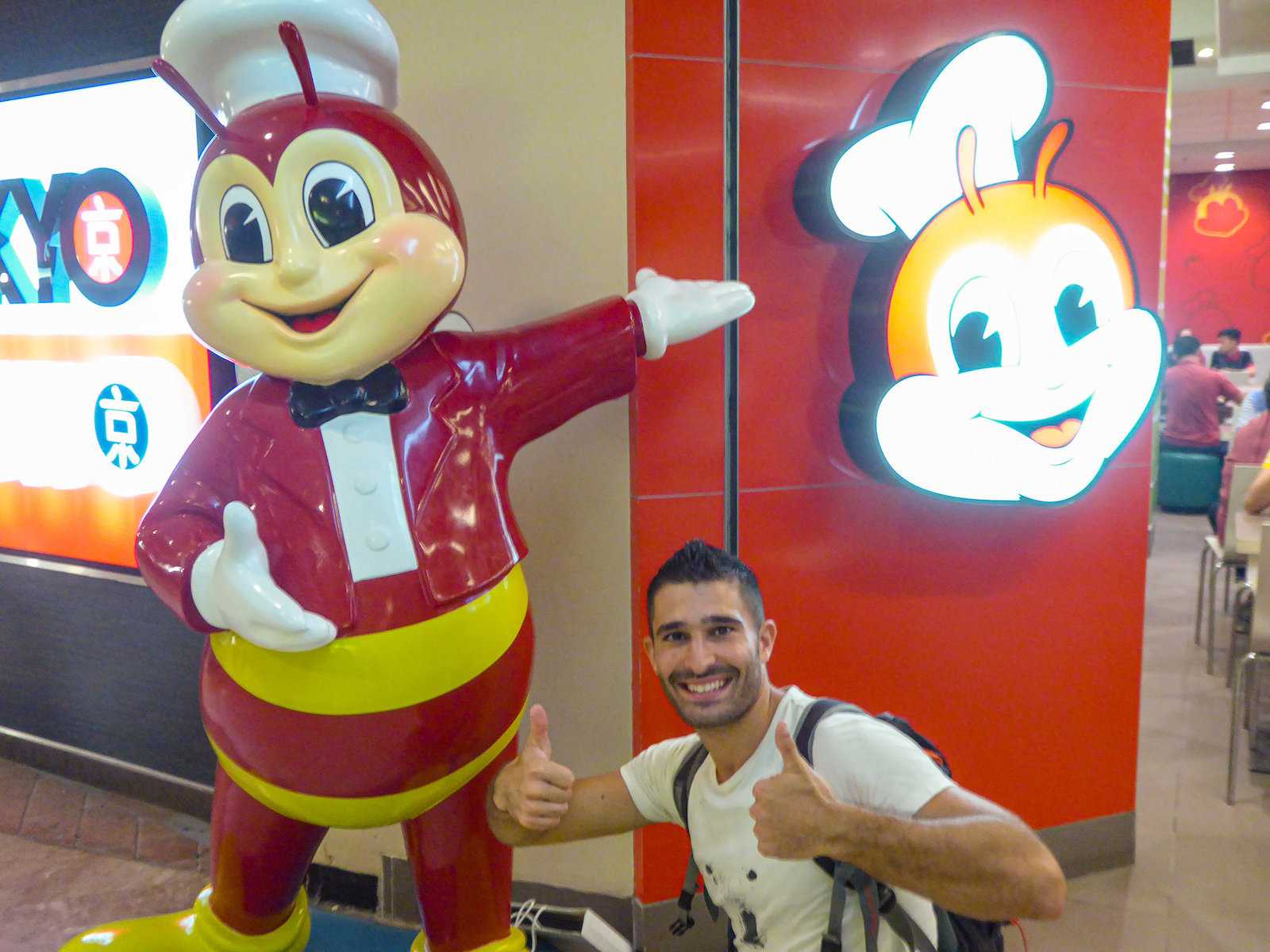
3. Filipinos are the best singers in the world!
Life lesson tip: never ever dare take on a Filipino at karaoke. They will floor you!!
These guys are genetically programmed to be amazing singers from the moment they leave the womb. Yet they’re so humble about it – and that’s how they catch you out! Every time we tried karaoke with our Filipino friends (male and female), we ended up feeling like their backing singers…
Whilst it was a Japanese musician (Daisuke) who first invented karaoke in 1971, it was Filipino, Roberto del Rosario who first patented the “Karaoke Sing Along System” in 1975 and subsequently commercialized it.
Karaoke is so popular in the Philippines that it is even used commercially to promote grocery items in supermarkets, as we found out when we visited the SM Megamall in Ortigas (Metro Manila). You can be sure if you’re hanging out with a group of Filipinos, the karaoke box is likely to make an appearance at some stage!
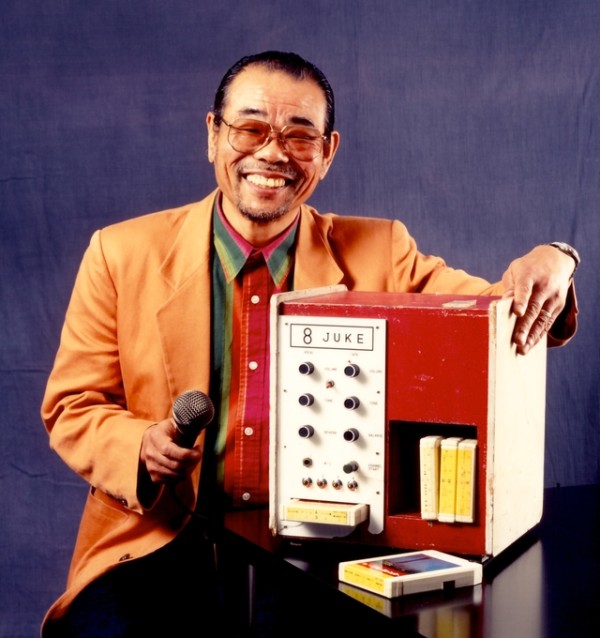
4. Jeepney as public transportation
Jeepneys are the most popular way of getting around in the Philippines. You can't miss them – they are super colorful and kitsch! They're also super crowded, which is how they got their name – one of the apparent origins of the word jeepney is from the words jeep and knee because passengers sit so closely together if you even manage to get a seat!
Jeepneys are a fun way to get around a big city and to meet a few locals. But make sure you keep your valuables safely zipped away from prying hands as pickpocketing is common in crowded public transport.
The Jeepneys actually came from the US Army back in the days when the USA maintained military bases in the country. The Jeepneys back then were nicknamed “The Willys” when they were used by the Allies during the Second World War. Post-WW2, the Filipinos held on to these US Military jeeps, gave them a fabulous makeover to become one of the most radiant public transports we've ever seen!
Just make sure you stay well clear from one if you see it tearing through traffic…!
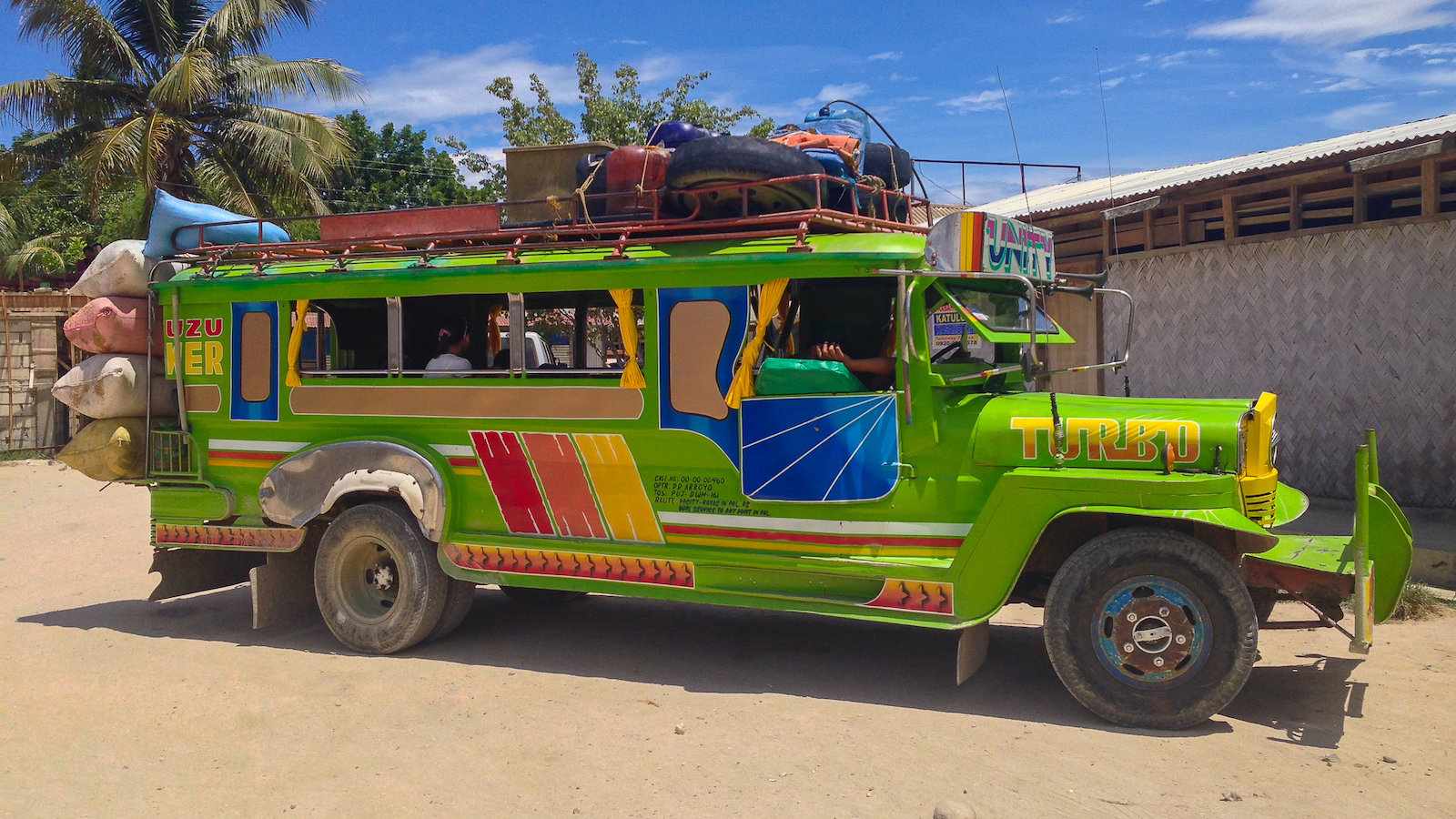
5. The Filipino tuk-tuk: one of a kind
The tricycle is the most popular way of getting around small towns and rural parts of the Philippines where the roads are much tighter than in the big cities.
Tricycles are motorbikes with a sidecar attached to them to carry passengers. The engines of the tricycles range from around 50 to 125cc, so when approaching a steep climb, we would have to get out to reduce the weight to help it climb up! The Filipino tricycle started appearing after WW2 and most likely comes from military leftovers, this time by the Imperial Japanese Army who used the Rikuo Type 97 motorcycle!
…and just like with the Jeepneys, the Filipinos gave these Japanese motorbikes a pretty vibrant makeover!
A tricycle ride is more expensive than a Jeepney, but cheaper than a taxi. Some of the more modern tricycles will even have a massive sound system installed with a particularly charismatic driver at the helm!
We had plenty of tricycle fun during our travels around the Philippines…
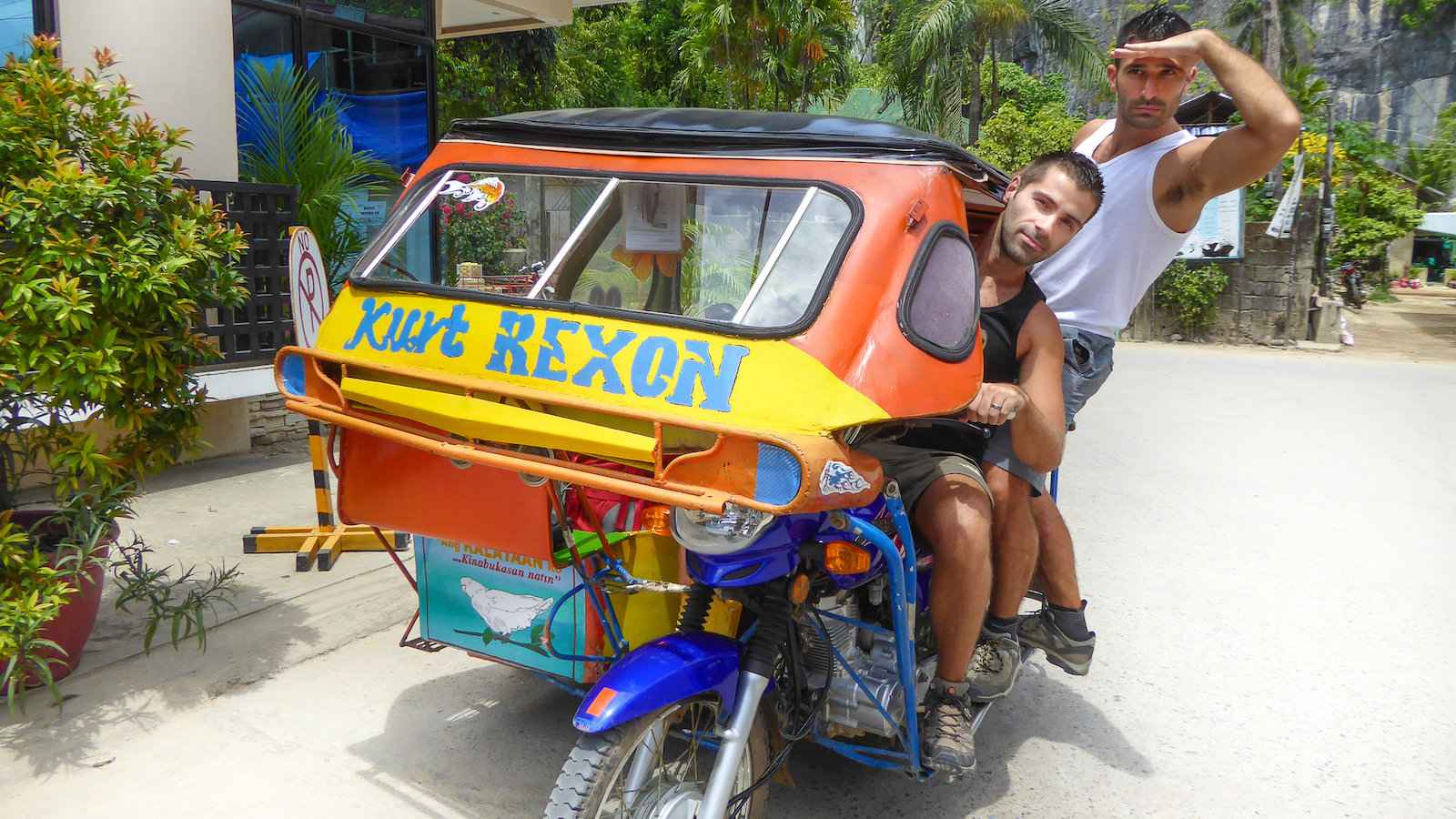
6. The first LGBTQ political party in the world
As if these guys aren't fabulous enough, the Philippines gave us the first LGBTQ political party in the world! Back in 2003, the Ang Ladlad (meaning “out of the closet” in Filipino) was created by writer, Danton Remoto. In doing so, Danton created the only LGBTQ political party that we know of in the world!
Unfortunately, due to lack of political funding, their campaigning efforts have been limited, so at best they managed to get 0.38% of the votes in the 2010 election and 0.37% in 2013. As a result of the poor turnout, in accordance with the voting rules, Ang Ladlad was disqualified in the 2016 elections.
Nonetheless, Ang Ladlad made history by becoming the first LGBTQ political party in the world, and for this we slut them. This is also why we rate the Philippines as one of the most gay friendly countries in Asia.

Advice for LGBTQ travelers to the Philippines
We found the Philippines to be very gay friendly and never had an issue getting a double bed in the places we stayed at. However, a conservative attitude is prevalent across the country due to the strong influence of the Catholic church, so be cautious when heading to remote areas. Also note that ALL travellers should avoid the south, especially Mindanao, the Sulu Archipelago and the Zamboanga Peninsula where pirates and violent crime is prevalent. Read more in our article about why the Philippines is gay friendly as well as our interview with local boy Rione about gay life in Manila.
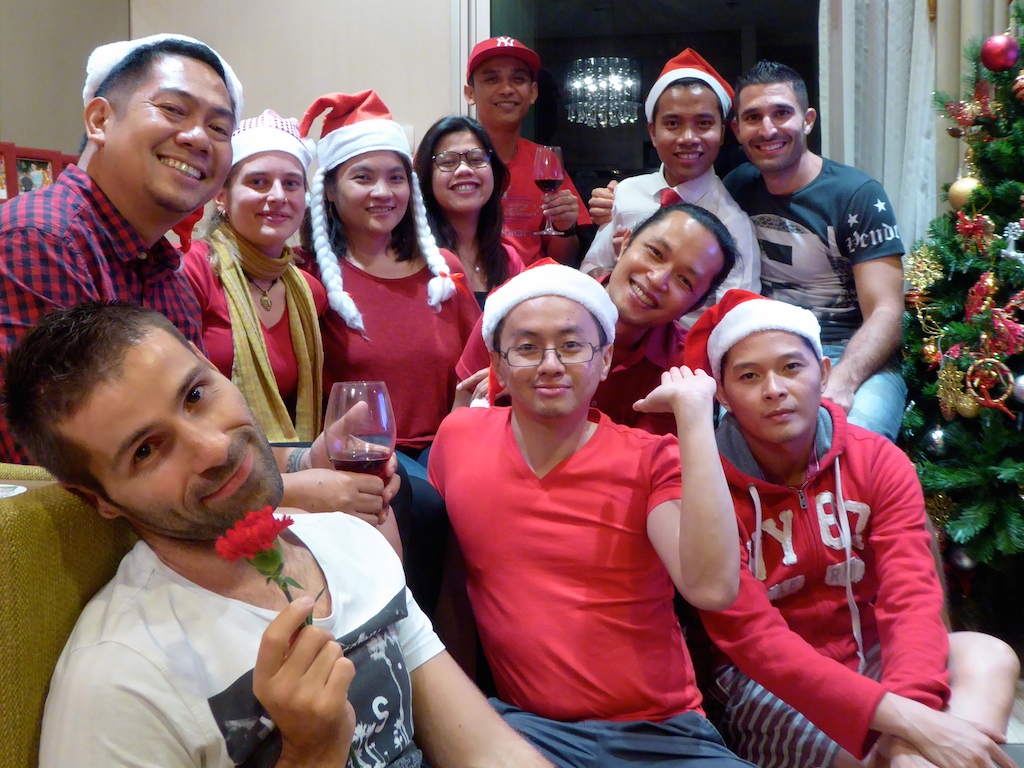
7. Anti “wang wang” measures!
When we arrived at Manila Naia Airport for our first time, we noticed a sign saying this was a ‘No “Wang Wang” zone‘…at first we giggled – was this a joke about men exposing their wangers in public?
In actual fact it's about corruption, cheating, and in the case of airports, queue cutting (as the immigration officer subsequently explained to us). In other words, this particular wang wang sign was warning people against trying to cut the queue.
The phrase wang wang in fact derives from the sound police car sirens make – and the phrase itself comes from the fact that criminals used to install fake police sirens to their cars so they could wang wang their way through the heavy traffic so prominent in Manila!
The “no wang wang” phrase is also used by Filipino Politicians when campaigning for measures to stamp out corruption and abuses of power.
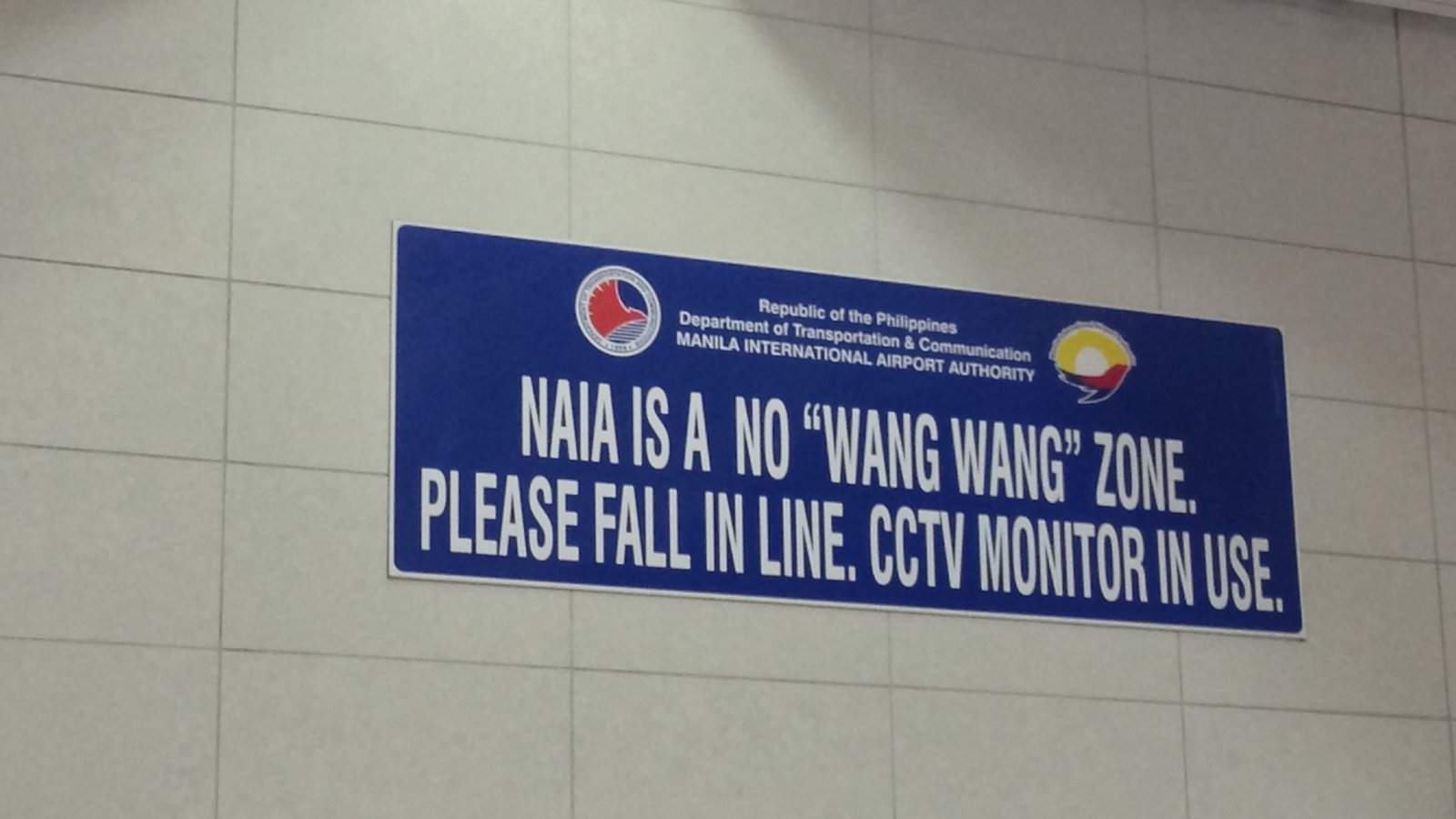
8. The Filipino flag indicates ‘at war' or ‘at peace'
The Filipino flag is the only one in the world, which can determine whether the country is at peace or at war, depending on how it is flown.
The flag comprises a white triangle with a sun surrounded by 3 golden stars representing the 3 island groups: Luzon in the North, Panay in the center, and Mindanao in the South. These are said to be the country's “principal islands” where the Spanish revolution started.
The flag of the Philippines also has a strip of red and blue:
- when the country is at peace, the flag is flown with blue on top.
- when at war, it is reversed with red on top (see image below).
The Filipino flag was first unveiled in 1898 after the return of General Emilio Aguinaldo from exile in Hong Kong. The original flag is now displayed at the Emilio F. Aguinaldo Museum in Baguio City.

9. Bangka: the Filipino boat
If you head to the beaches in the Philippines and travel around its gorgeous islands, you're bound to see plenty of bangka boats. For us, it was our first time seeing such a strange shaped boat, but in fact, it's not only used in the Philippines but also in New Zealand (called waka ama), in Hawaii (called wa'a), and in Indonesia (called jukung).
A bangka is like a canoe, supported by two outriggers made from bamboo (called katig) on each side, which act as a support and stabilizer for the vessel hub. The vessel hull is made from marine plywood and painted with several coatings of epoxy paint. The smaller ones can be maneuvered by paddles and the larger ones with an engine. The outriggers are made from bamboo. Their purpose is to support and stabilize the boat. This design allows bangka boats to travel more efficiently in choppy waters compared to canoe boats.
Bangka boats are the main water transportation for locals, particularly for fishing, transporting goods, and island hopping tours.
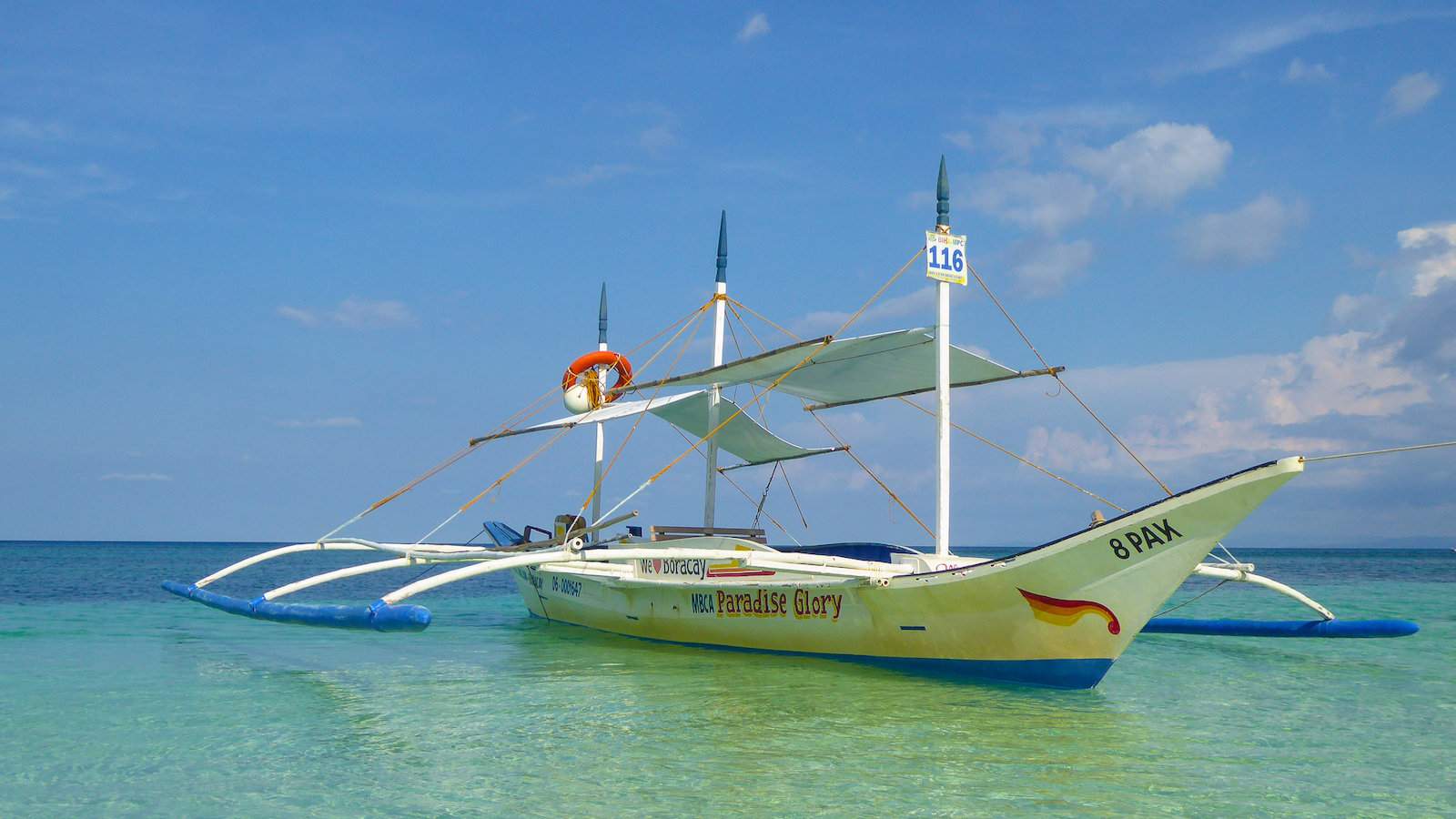
10. Staircases in the Philippines avoid having 3 steps!
One of the most fascinating superstitions in the Philippines includes avoiding stairs having a multiple of 3, aka, “oro, plata, mata”, which means “gold, silver, death”.
What this means in practice is that homes are designed so that the staircase never has just 3 steps, 6 steps, 9 steps etc The third one is avoided because it symbolizes “mata” – death! For example, step 1 is “oro”, step 2 is “plata”, step 3 is the dreaded “mata”, step 4 goes back to representing “oro”, step 5 is “plata”, step 6 is “mata”, and so on. Therefore, staircases avoid ending with just 3 steps or its multiples – 6, 9, 12, 15 etc. By doing this it is alleged you avoid bad luck and you instead attract wealth because your top step would either represent an “oro” (gold) or “plata” (silver) step.
The Oro Plata Mata superstition is so prevalent across the Philippines that licensed architects actually have to take it into account when designing a new home for clients!

11. Only Christian nation in Asia
Visiting the Philippines might leave you wanting to praise the lord in more ways than one!
There are the obvious reasons – like the heavenly scenery and the angelic men – but there’s also the religious landscape. As the only Christian nation in Asia and the fifth largest Christian country on earth, it’s safe to say that Filipinos take their religion seriously. Likely, the concept of Christianity was first introduced to natives of the Philippines by Arab traders. However, it wasn’t until Spanish colonization in the 1500s that the faith truly left its mark on the people.
Nowadays, with roughly 86% of the population following Catholicism and an extra 8% practicing with other branches of Christianity, it’s safe to say that religion influences many different parts of life in the Philippines. Besides seeing church buildings and statues, tourists will only be affected by this devout form of worship when holidays come around. Let’s just say the Christmas celebration gets very… intense!
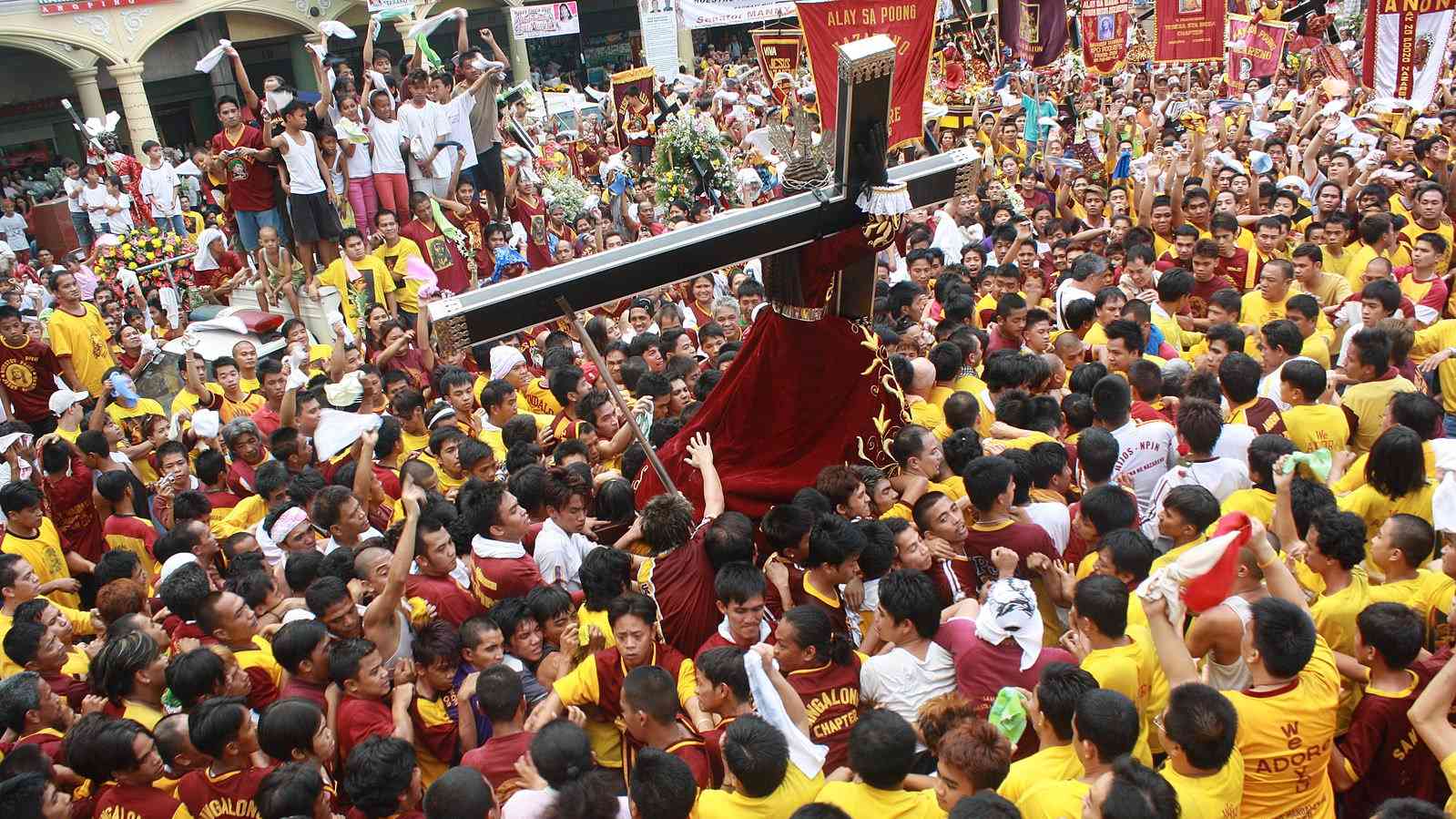
12. World's largest supplier of nurses
Nurses might be the most overworked and underappreciated people in the general workforce. Amazingly, tons of those nurses that you encounter in your day-to-day experiences actually come from overseas!
The Philippines, in particular, is the number one supplier of nurses worldwide, comprising about 25% of all nurses who work outside of their home country. For decades, the majority of Filipino nurses have flocked to the United States for work. This phenomenon can be explained due to the role of US colonization. Filipinos have long existed with a highly Americanized education system that specifically includes a program for nursing. Though, over recent years, countries like Saudi Arabia, Ireland, and the Netherlands have seen an influx of Filipino nurses joining their ranks.
Basically, all of this goes to say, be sure to thank your nurses for the excellent job they do! You never know about their background or what kinds of challenges they face in their home lives.
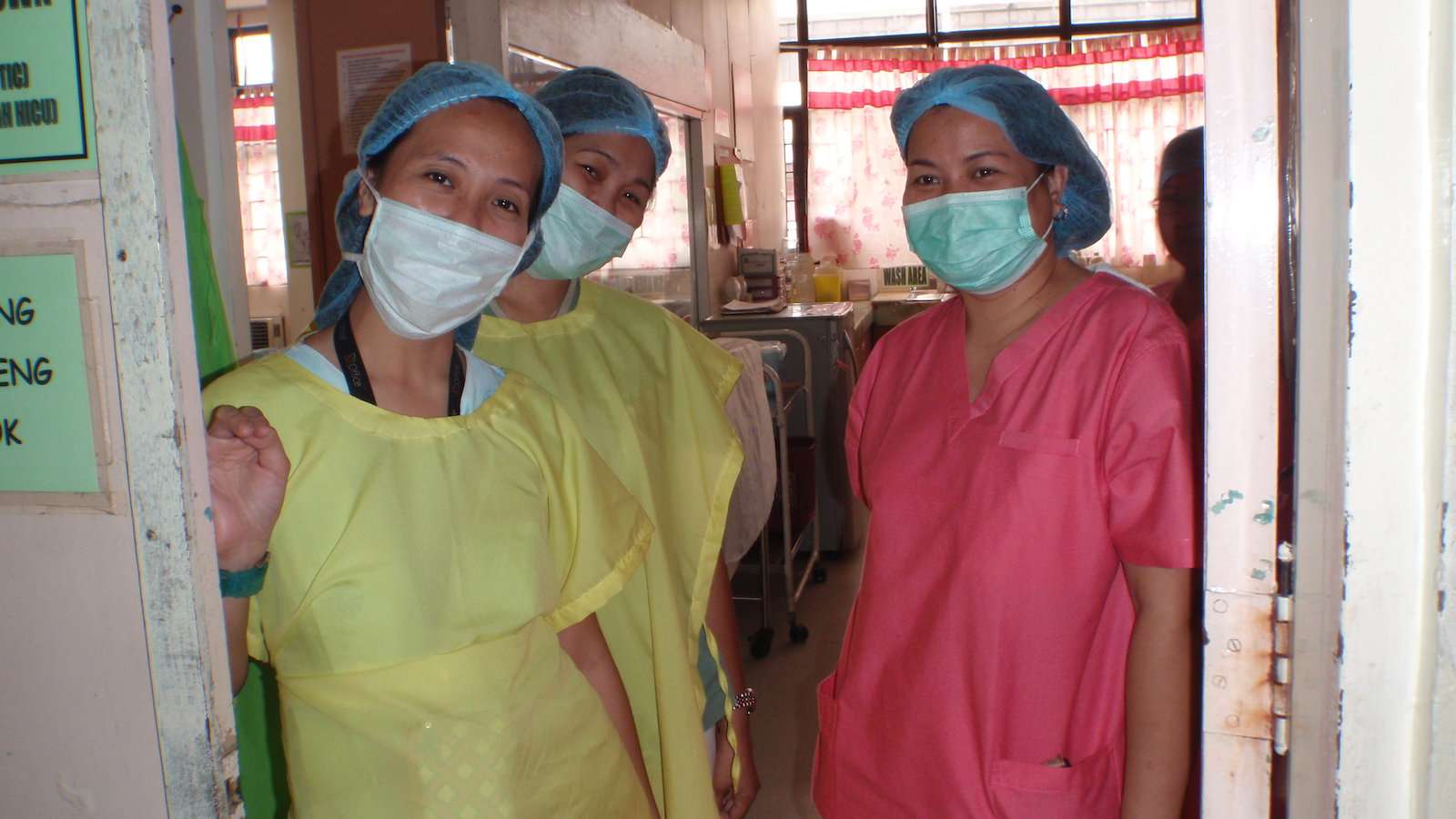
13. World's longest underground river
At 8.2km, the Puerto Princesa Subterranean River stands as the longest river of its kind across the globe.
Surrounded by gorgeous limestone karst and a completely diverse, mountain-to-sea ecosystem, it is no surprise that the river would be named one of the new seven wonders of nature! However, there is still more to love about this enticing destination. For instance, the river actually runs straight into the sea, meaning the lower half is impacted by the rising and falling of the ocean tides. It also has a second floor that is full of small, rushing waterfalls.
Located just north of Puerto Princesa, Palawan and nestled into a UNESCO listed national park, it is super easy to book a day trip to travel along the Philippines’ famous underground river. So, on that note, be prepared to witness some of the most astounding sights the world has to offer!
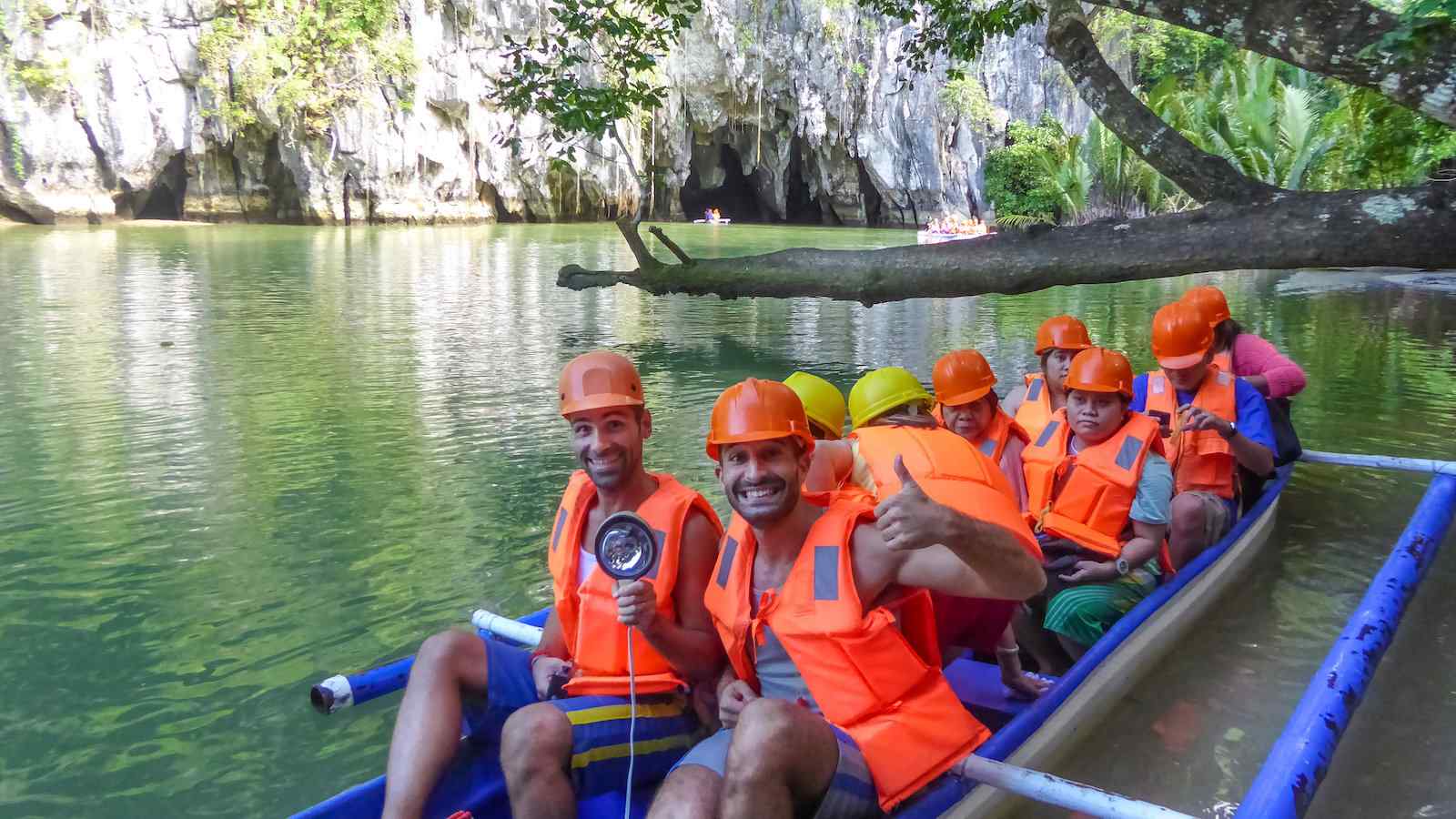
14. Largest ever Papal crowd recorded
The fabulous Pope Francis famously backed same-sex civil unions in 2020, which is a wild and surprising change for the Catholic church! But did you know that he also helped to assemble the largest ever papal crowd recorded in history?
In the increasingly Catholic country of the Philippines, the Pope ended his state visit with an open-air mass. On January 18th, 2015 (the Feast of Santo Niño) somewhere between six and seven million Filipinos gathered in Rizal Park to participate in this worship ceremony. Despite a seemingly never-ending rainfall, the group stayed firm and listened closely to the Pope’s words. The last time a papal crowd got close to this size was 1995 when Pope John Paul II held mass for just five million Filipinos at Luneta Park.
To give perspective, the biggest Pride in the world draws just two million people out of their homes. Impressive doesn’t even begin to describe this historical event!

15. Around 175 individual languages spoken in the Philippines
While some destinations house an overwhelming number of spoken languages (we’re looking at you, Papua New Guinea), the Philippines still impresses, with roughly 175 existing throughout the country.
Out of those 175, it is estimated that 171 are still living languages while the remaining have no known speakers. What’s most remarkable is that most of those living languages come from groups with populations in the 1,000s! However, at the end of the day, English and Tagalog remain the only two officially recognized languages for the whole nation. Back in the 19th century, Filipinos were under Spanish rule and therefore taught the language. Similarly, English only became popular due to American colonization around the 20th century.
Perhaps the biggest mystery remains… how on earth did the Philippines come to have so many languages? There is the obvious answer of colonialism, but trade, tourism, and time have certainly made their mark as well.
16. Second largest archipelago in the world
An archipelago can be simply defined as a group of islands. There are plenty of noteworthy countries that exist as archipelagos, but the Philippines is undoubtedly exceptional by comparison.
With roughly 7,640 islands comprising the nation, the Philippines is considered the second-largest archipelago in the world. With a land area of about 300,000 square kilometers, it also exists as the fifth-largest island country. The entire destination can be divided into three parts: Luzon, the Visayas, and Mindanao. The first group is named after the largest island of the Philippines, Luzon. Likewise, the last group is named after the second largest, Mindanao.
Overall, the eleven largest Filipino islands comprise 95% of the country’s total landmass, and only 2,000 islands are inhabited. This means that the surrounding waters of the South China Sea, Philippine Sea, Sulu Sea, Celebes Sea, and the Luzon Strait are home to tons of tiny, deserted islands.
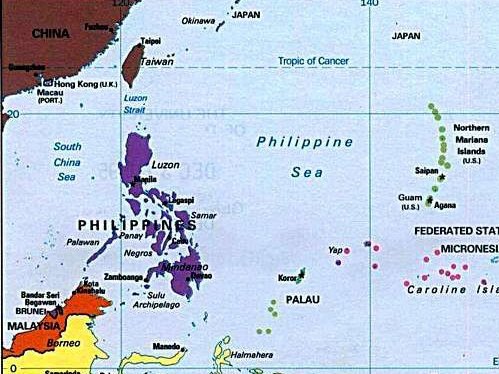
17. A fertilized duck embryo is a popular snack!
When it comes to balut… it seems as though many people need to see it in order to believe it. But trust us, the snack is as real and as popular as food could ever be!
To give you a quick rundown of balut, the best word to describe it is fascinating. The dish starts as a fertilized duck embryo that is roughly 17 days old. That embryo is then boiled and eaten straight out of the shell. Sometimes, you might be able to have it served with a splash of vinegar to compliment the taste. Honestly, in our opinions, the flavor is mild while the texture is challenging. Still, the locals go nuts for it!
Balut is intended to be a nutritional snack, which is why it is a common occurrence to watch children happily running up to a food vendor to snag a bite of their favorite on-the-go treat.

18. The yo-yo was invented in the Philippines
Although specific versions of the yo-yo were present during the days of Ancient Greece and China, it wasn’t until the 1920s that the yo-yo we know and love became a reality.
And it’s all thanks to one man! Pedro Flores, who was working as a bellhop at a hotel in Southern California, could typically be found playing with his yo-yo during his lunch breaks. Amazingly, he caught the attention of guests nearly every day, which sparked his interest in pursuing the toy as a business venture. He quickly began making yo-yos that were just like his own. You see, unlike the yo-yo from the past, these had one continuous string that would twist around something and produce a loop to slide over the axle.
Essentially, Pedro Flores created a more pristine and polished form of the yo-yo. Due to his innovation, the toy gained a new range of fluid motion.
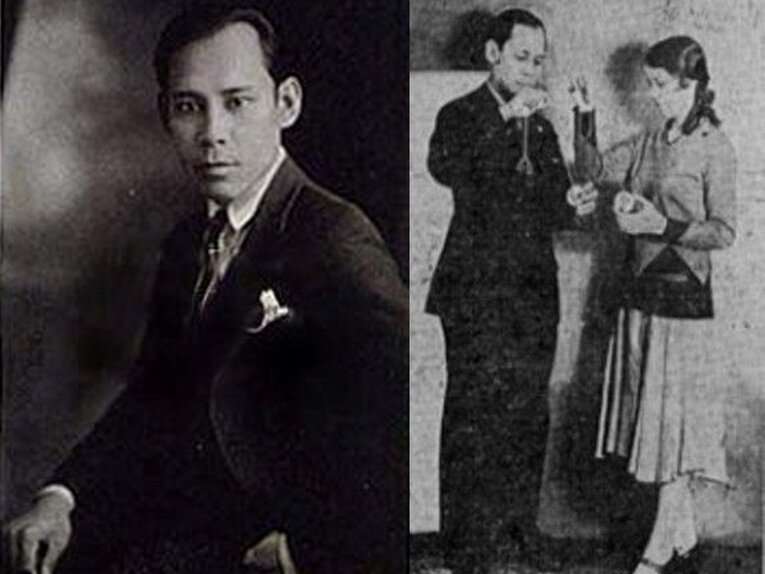
19. The longest Christmas celebration in the world!
When Andy Williams first sang “It’s the Most Wonderful Time of the Year,” we can’t help but wonder about the length of time he was referring to.
Obviously, he was thinking about Christmas time… but for some of us, Christmas can last a lot longer than just one or two months. If you really believe that you are a holly jolly fanatic, then we highly suggest visiting the Philippines anywhere between the months of September and January. You heard us right – Filipinos love their Christmas spirit! In fact, they love it so much that they have curated the longest Christmas celebration known across the globe.
Holiday decor such as the traditional star-shaped lanterns known as parol can be found as soon as National Heroes Day weekend in August. From there, you better be ready to embrace the next four to five months of good food, friendly company, and the infamous Santa Claus!
20. The true highlight of the Philippines: the Filipinos!
As we said at the start of this article, the Filipinos are such warm-hearted and welcoming people that you will leave craving to return to them. Fact!
Cheesy-ness aside, the OFWs (or Overseas Filipino Workers) are in fact the country’s largest and best export, due to the large amounts of remittances sent home each year.
Remittances from OFWs account for around 11% of the Filipino economy. It’s become such an important industry that each year, the government teaches thousands of people the skills they need to get jobs abroad.
This explains why the Pinoys are such an international bunch and why we’ve been so fortunate to meet so many of them around the world.
Watch our video about our travels in the Philippines as a gay couple:
For more inspiration:
- Read about our experience becoming mermaids for a day on the Philippines island of Boracay
- For more oceanic activities check out our favourite scuba diving spots in Asia
- Read about what it's like to travel in Asia as a gay couple
- If you're heading that way, check out our gay country guide to Thailand
- We've also written a gay itinerary for first-time visitors for Japan
- If you're heading to Japan, don't miss our gay city guide to Tokyo
- If you like visiting islands then we also have a gay guide to Japan's Yaeyama Islands
Like this post? Pin it
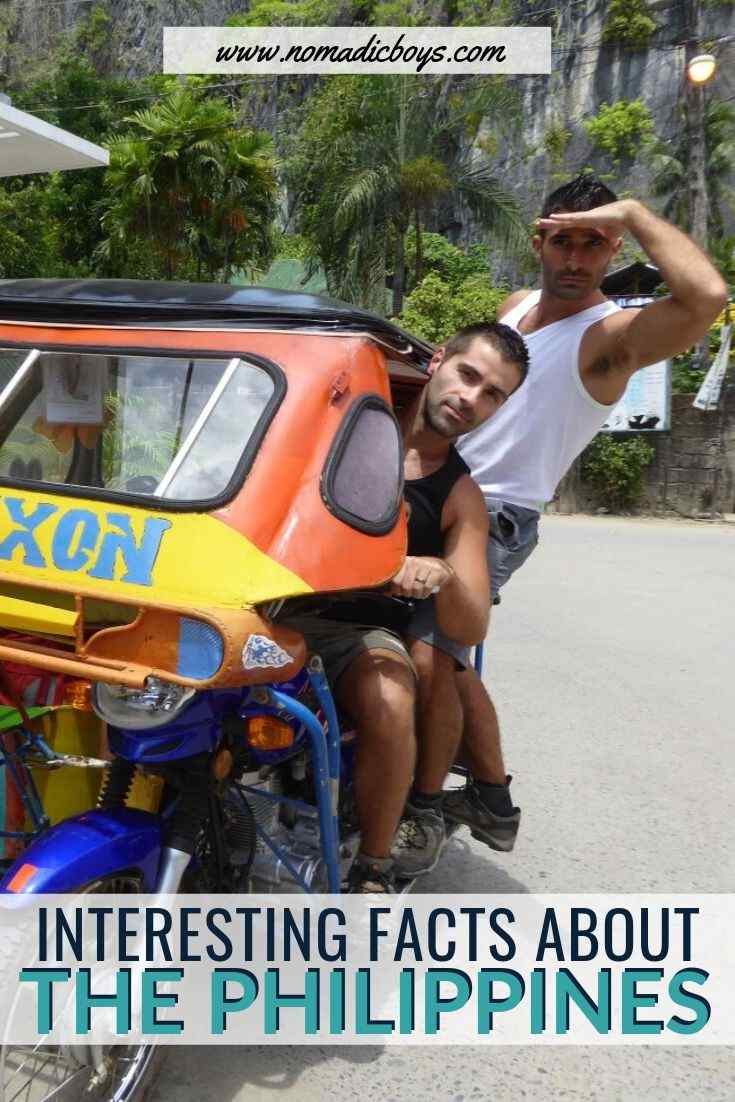

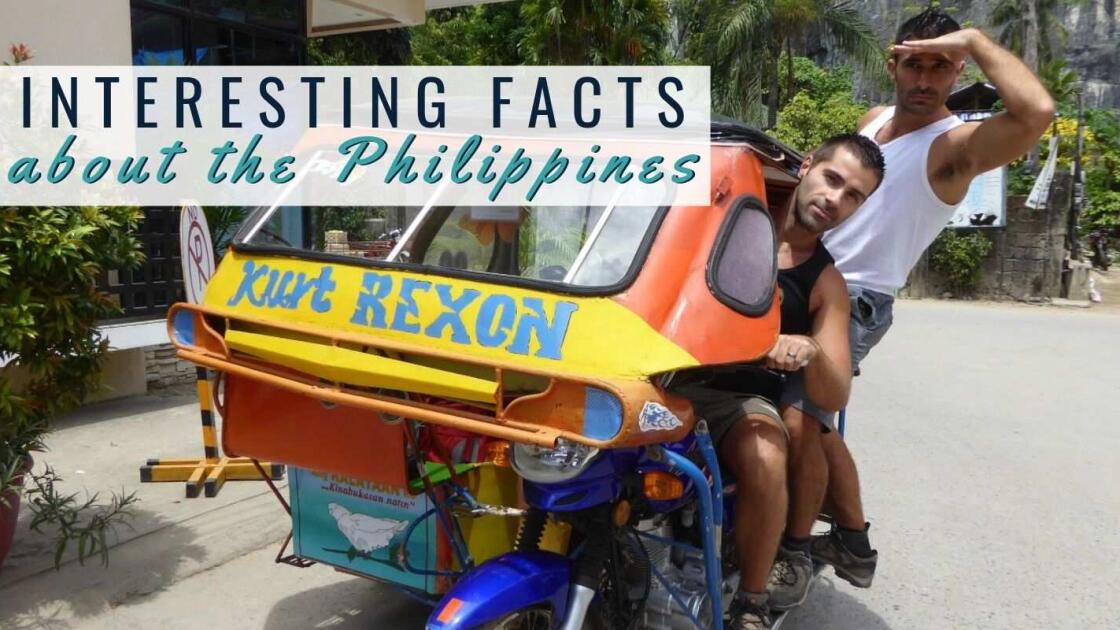

Nishi
Sunday 2nd of August 2020
Wow, awesome facts about the Philippines. This is the first time I am reading this kind of post. So interesting!
Stefan Arestis
Monday 3rd of August 2020
Thanks! Glad you like it :)
Rico Tubiano
Sunday 5th of January 2020
Amazing! I recommend you travel more to our beautiful country and explore Batanes, Benguet and Siargao!
Stefan Arestis
Wednesday 8th of January 2020
Thanks Rico! We can't wait to explore more of the Philippines :)
Freddy
Wednesday 8th of May 2019
The philippines is very intersting and very good
Nomadic Boys
Thursday 9th of May 2019
It sure is :)
Carol
Friday 21st of December 2018
I'm so in love with Coron, Palawan. I can't believe that it's been three months since we went.
Nomadic boys
Friday 21st of December 2018
Agreed!
Carol
Saturday 14th of April 2018
Love seeing these photos and I enjoyed your story about El Nido. Were you able to visit Coron as well? If you haven't been there, I highly recommend visiting Coron, Palawan.
Nomadic boys
Saturday 14th of April 2018
Thanks Carol! Not been there yet, but heard amazing things about it :)